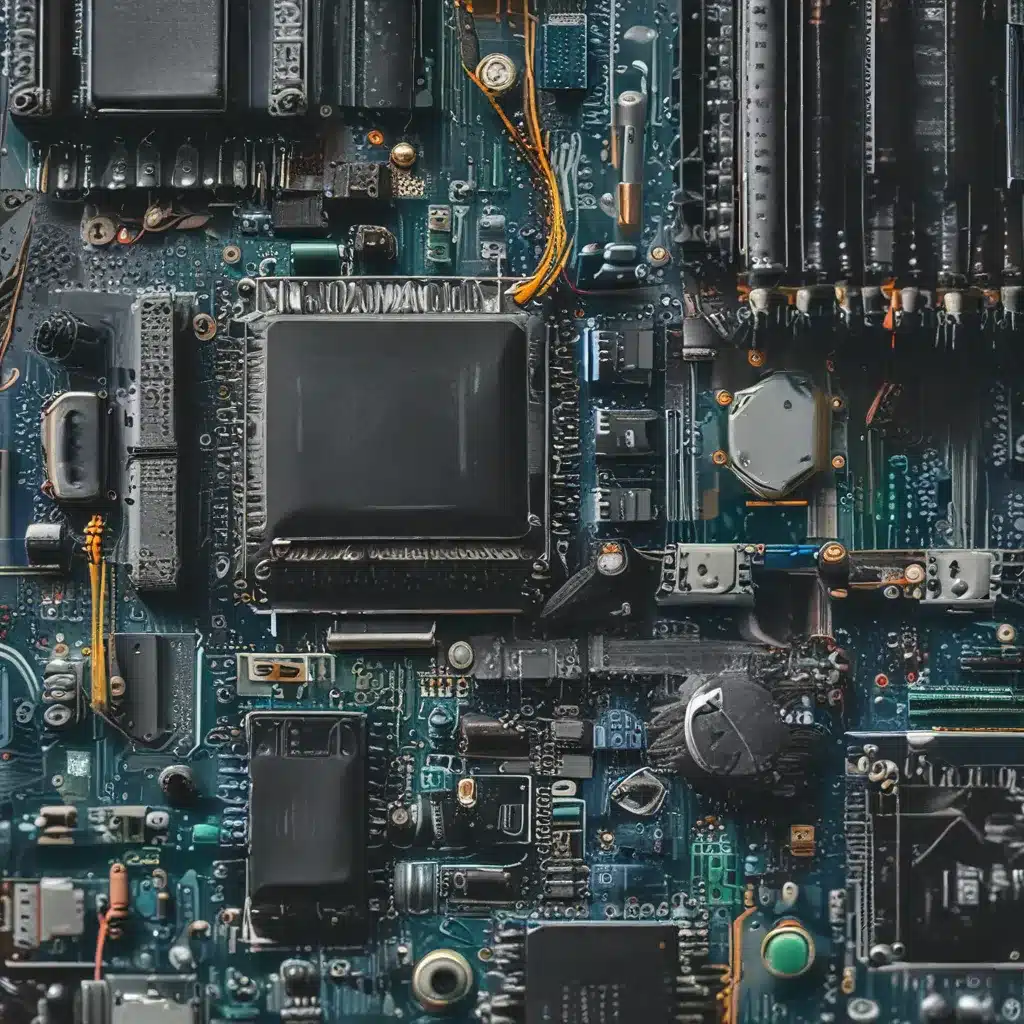The Dreaded Flickering LCD
It was a dark and stormy night (or maybe just a regular Tuesday) when I found myself staring down the barrel of a malfunctioning LCD display. The poor thing was flickering like a disco ball caught in a hurricane, making my eyes want to stage a mutiny against my brain.
As an IT enthusiast, I’ve seen my fair share of hardware issues. But this one had me scratching my head more than a dog with fleas. I mean, how hard could it be to fix a simple LCD, right? Little did I know, I was about to embark on a journey filled with more twists and turns than a rollercoaster built by a drunk engineer.
Diving Into the Troubleshooting Abyss
I started, as any self-respecting tech junkie would, by scouring the internet for answers. And boy, did I find them – a veritable treasure trove of information, from forum posts to technical manuals. It was like trying to take a sip from a fire hydrant, but I was determined to get to the bottom of this LCD mystery.
The first thing I learned was that LCD issues can be a real pain in the you-know-what. Apparently, these displays are a delicate balance of software, hardware, and pure witchcraft. One wrong move, and you’re looking at a screen that’s about as useful as a chocolate teapot.
A Crash Course in LCD Anatomy
As I dove deeper into the troubleshooting rabbit hole, I discovered that these LCD displays have a surprising number of moving parts. There’s the microcontroller, the backlight, the contrast, and a whole host of other components that all have to play nicely together. One forum post I found even went so far as to list out a whopping 9 common hardware-related mistakes that can cause LCD issues.
It was like trying to perform heart surgery while blindfolded and wearing oven mitts. But I was determined to crack the code and get my LCD back in tip-top shape.
Trial and (Lots of) Error
Armed with my newfound knowledge, I set out to tackle the problem. I checked the connections, made sure the potentiometer was set correctly, and even double-checked the wiring. But no matter what I did, that darn display just wouldn’t cooperate.
It was like watching a game of musical chairs, where the music never stops and the chairs keep disappearing. I tried everything – from updating drivers to performing a full system reset. But the flickering persisted, mocking me with every blink.
Seeking Salvation from the Experts
Frustrated and on the verge of tossing the whole thing out the window, I decided to take a step back and seek help from the experts. I scoured the internet for forums and communities where people had faced similar issues, and what I found was both enlightening and a little disheartening.
Turns out, the problem could be anything from a faulty LCD to a software compatibility issue. And the solutions? Well, they ranged from the simple (check your wiring) to the downright esoteric (try a different library entirely).
A Glimmer of Hope
Just when I was about to give up and accept defeat, I stumbled upon a post on Reddit that gave me a glimmer of hope. It was a similar story – a freshly upgraded PC with hardware that just wouldn’t play nice. But the solution, while not immediately obvious, was a reminder that sometimes the answer isn’t always where you expect it to be.
The Surprising Culprit
After hours of trial and error, endless forum posts, and a few choice words directed at the LCD gods, I finally landed on the culprit: a seemingly innocuous setting buried deep within the BIOS. Turns out, my display was trying to communicate with the system in a way that just didn’t jibe with the new hardware. A quick tweak, and boom – the flickering was gone, and my LCD was back in business.
Lessons Learned
The whole experience taught me a valuable lesson: when it comes to hardware issues, software isn’t always the problem. Sometimes, the solution lies in the depths of the hardware itself, hidden away in a setting or configuration that’s easy to overlook.
But more importantly, it reminded me that no matter how daunting the problem may seem, there’s always a solution out there – you just have to be willing to dig a little deeper, think outside the box, and don’t be afraid to ask for help. After all, that’s what the wonderful world of IT is all about, right?
So, the next time you find yourself staring down a malfunctioning LCD, remember: don’t give up, and don’t be afraid to get your hands dirty. With a little persistence and a lot of creativity, you just might be able to bring that flickering display back to life.
And who knows, maybe you’ll even stumble upon a few hidden gems along the way, like the tale of a frustrated Dell customer who finally got their laptop replaced after a long, arduous journey.
So, are you ready to take on the challenge? Head on over to https://itfix.org.uk and let’s get started!













